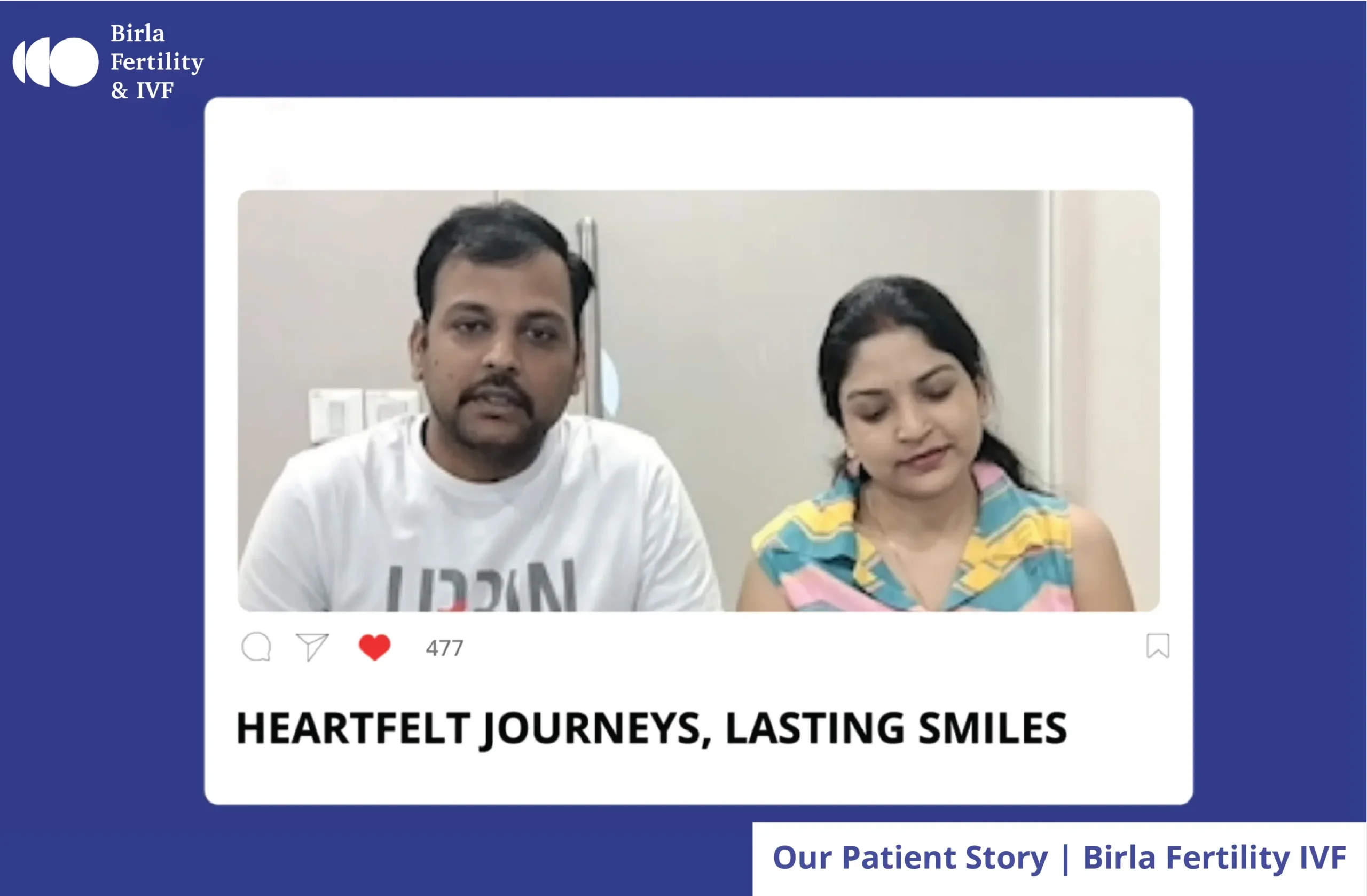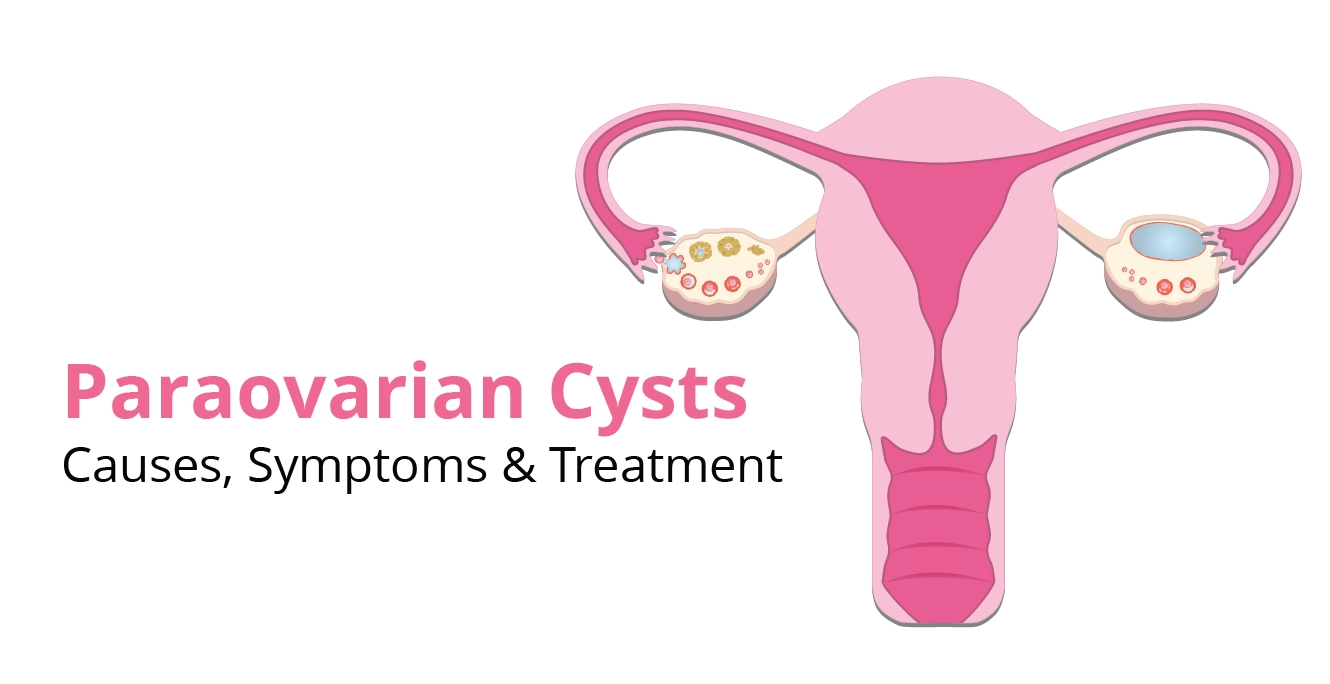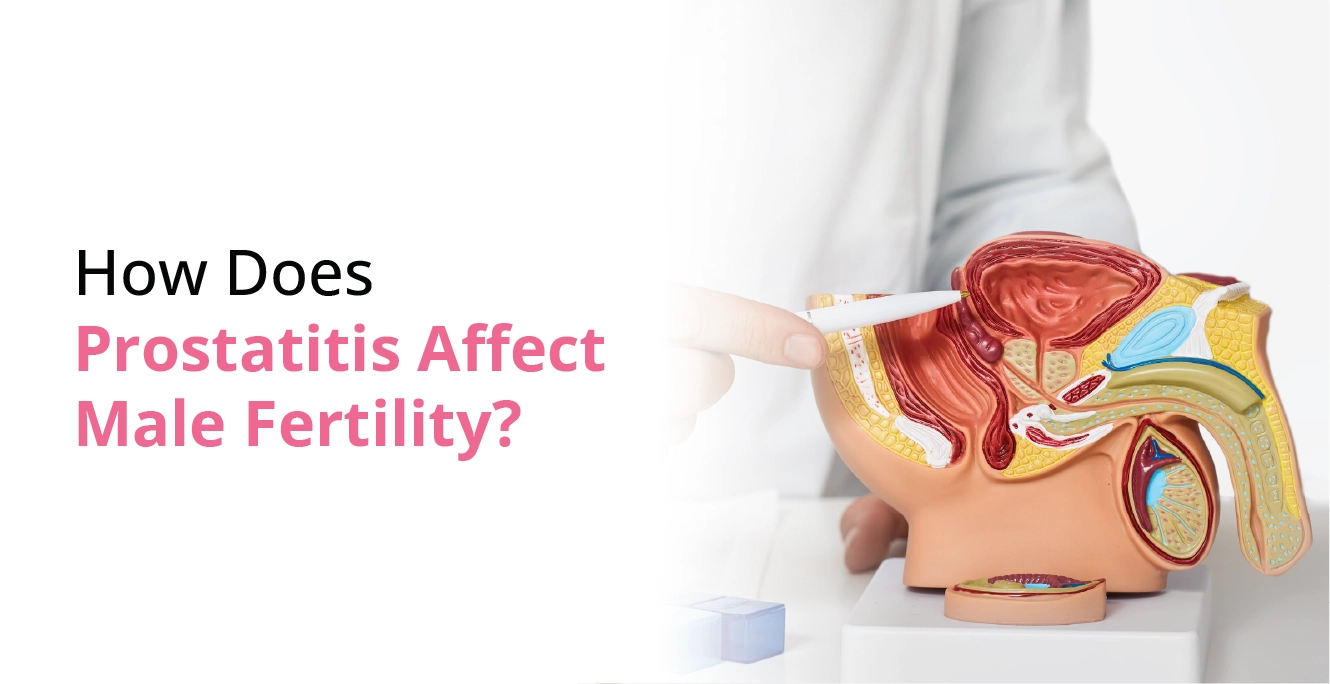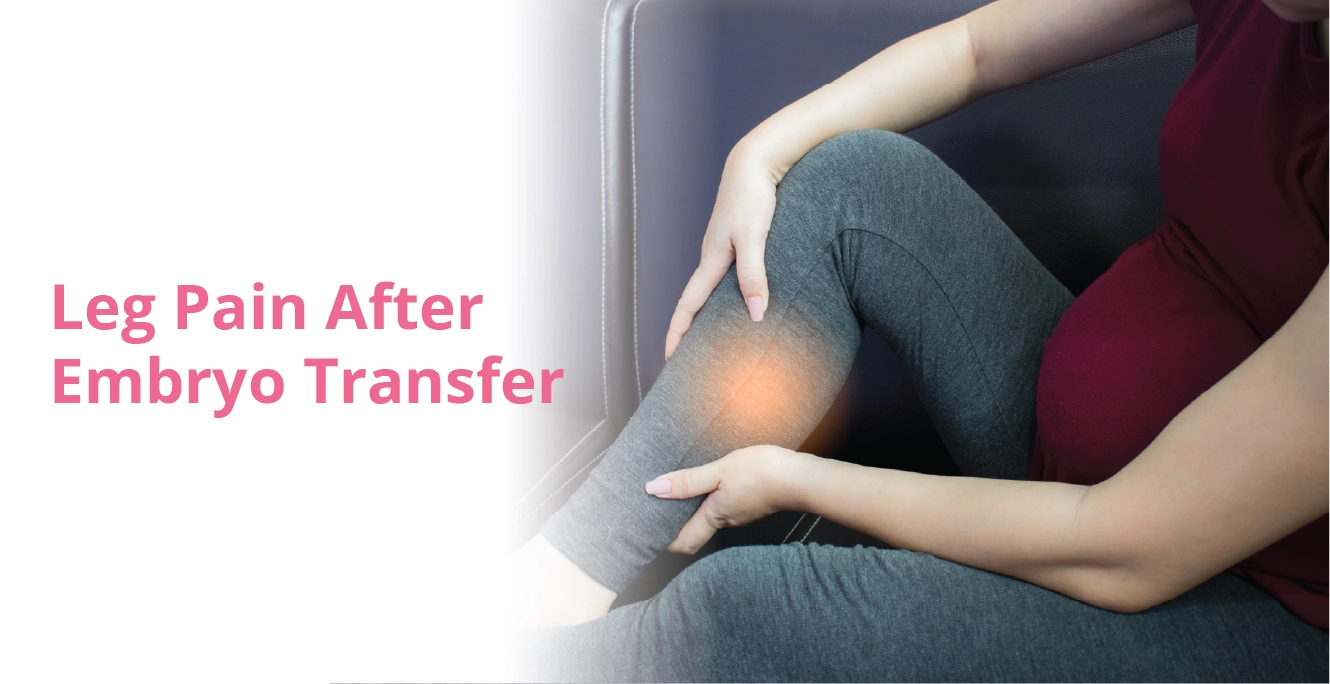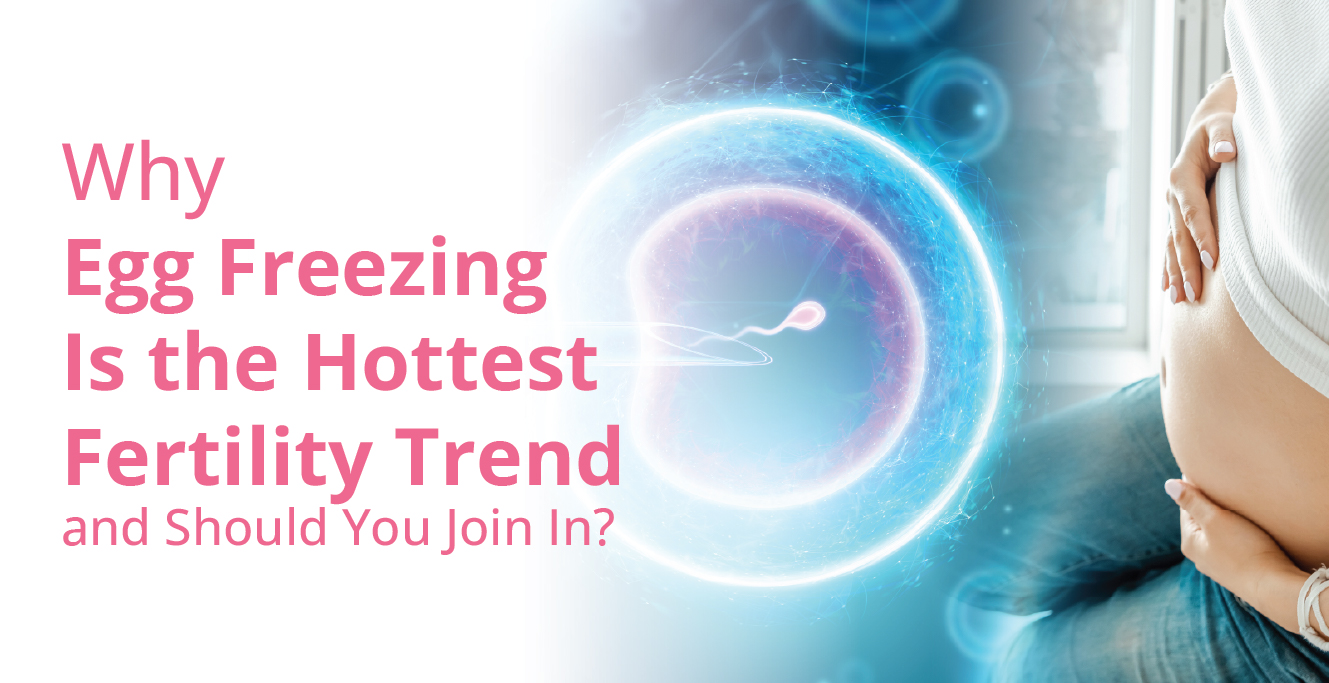Frozen Embryo Transfer (FET)
Frozen Embryo Transfer (FET) involves thawing previously frozen embryos and transferring them into the uterus. This process offers hope for those facing fertility challenges, allowing embryos from an earlier IVF cycle to be used, enhancing the chances of a successful pregnancy.
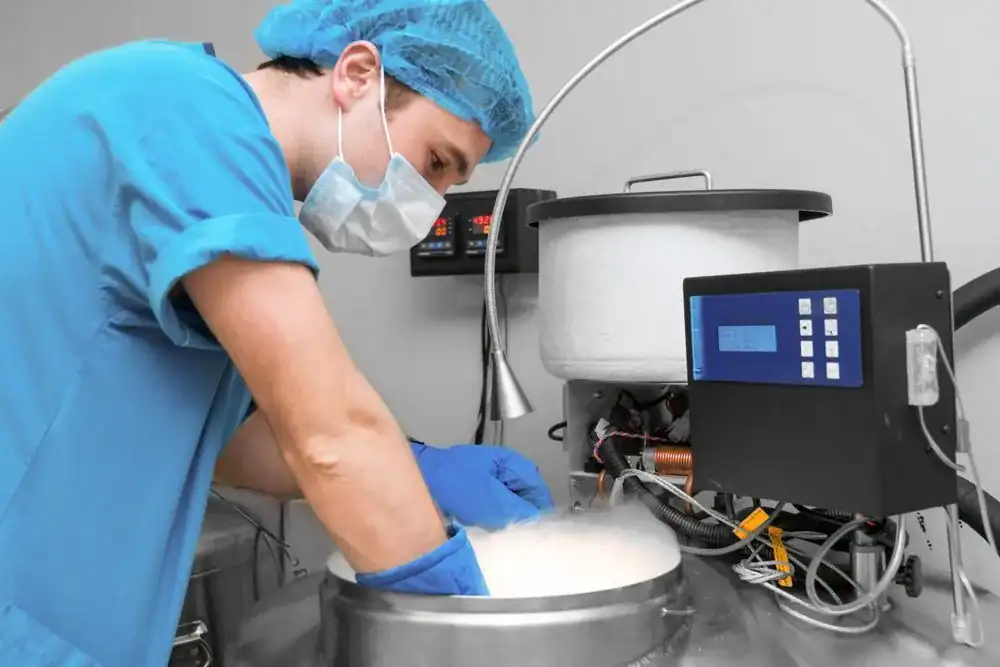
What is FET?

FET is a fertility treatment where previously frozen embryos are thawed and transferred into the uterus. This process allows couples to use embryos created from a past IVF cycle, maximising their chances of pregnancy without undergoing a new cycle.
FET is often recommended if initial IVF cycles don’t result in pregnancy, or if couples wish to delay pregnancy. It can also be beneficial for those with specific medical conditions or lifestyle factors affecting their current IVF cycle.
Fertility clinics like Birla provide comprehensive support through the whole FET process, including personalised care, thorough monitoring and expert advice to optimise your chances of a successful pregnancy.
Why is FET Recommended?
FET is a valuable option in IVF that offers several benefits:
-
Flexibility in Timing: FET allows you to schedule the transfer at a time that suits you best, which can be especially helpful if you need to focus on your health or personal circumstances before proceeding with pregnancy.
-
Improved Success Rates: Using frozen embryos can lead to higher success rates in IVF. Studies show that embryos thawed from cryopreservation often implant more successfully, leading to healthier pregnancies.
-
Reduced Ovarian Stimulation: FET eliminates the need for additional ovarian stimulation, reducing the risk of ovarian hyperstimulation syndrome (OHSS) and minimising the associated side effects.
-
Better Control Over the Cycle: By transferring embryos at a later date, doctors can better synchronise the transfer with your uterine lining, enhancing the chances of successful implantation.
-
Preservation of Embryos: Freezing embryos preserves your unused embryos for future use. This means that if the current cycle does not result in pregnancy, you still have viable options for future attempts.
-
Healthier Embryos: Sometimes, freezing and thawing can help in selecting the most viable embryos, as some studies suggest that the process may naturally select embryos that are more likely to succeed.

How It Is Done?

FET is a part of assisted reproductive technology where previously frozen embryos are thawed and transferred to a woman’s uterus. Here’s a simplified overview of the process:
-
Preparation: Before the transfer, the patient’s uterus is prepared using hormone medications like estrogen and progesterone. This helps to create a receptive environment for the embryo.
-
Monitoring: During preparation, regular ultrasound scans and blood tests are performed to monitor the lining of the uterus and hormone levels.
-
Thawing Embryos: On the day of transfer, frozen embryos are carefully thawed in a controlled environment. The embryologist ensures that they survive the thawing process and are in good condition.
-
Embryo Transfer: The selected embryo(s) are loaded into a thin, flexible catheter. This catheter is gently inserted through the cervix and into the uterus, where the embryo is released. The procedure is typically painless and does not require anaesthesia.
-
Post-Transfer Care: After the transfer, patients may be advised to rest and continue taking hormone medications to support embryo implantation.
-
Pregnancy Test: About two weeks after the transfer, a blood test is done to check if the embryo has been successfully implanted and pregnancy has begun.
Why Choose Us
Choosing the right fertility clinic is crucial for starting your family. At Birla Fertility & IVF, we offer personalised care with expert specialists guiding you every step of the way. Our advanced labs and outstanding success rates have helped over 2,30,000 patients achieve their dream of parenthood.
Things to Remember for FET
Before the Treatment
- Consult Your Doctor: Discuss your medical history and medications. Follow your doctor's specific instructions.
- Pre-Procedure Testing: You may need blood tests or ultrasounds to check hormone levels and uterine lining.
- Medication: Follow the prescribed hormone treatments.
- Lifestyle Adjustments: Avoid smoking and alcohol, and follow recommended lifestyle changes.
During the Treatment
- Embryo Preparation: The frozen embryos are thawed and assessed for quality.
- Uterine Preparation: Your doctor may perform a transvaginal ultrasound to guide the placement of the embryos.
- Transfer: Using a thin catheter, the embryos are gently placed into your uterus. The procedure is usually quick and minimally invasive.
After the Treatment
- Rest: You will be advised to rest for a short period. Resume normal activities as recommended by your doctor.
- Monitor Symptoms: Expect some mild cramping or spotting. Report any unusual symptoms to your healthcare provider.
- Follow-Up: Schedule follow-up appointments for blood tests to check hormone levels and confirm if implantation is successful.
- Emotional Support: The process can be emotionally challenging. Seek support from loved ones.
Frequently Asked Questions
Recent Blogs
Book an appointment
Hassle-Free Appointment Booking
Select Preferences
I know my doctor
Egg Freezing Cost in Different Cities
- Egg Freezing Cost in New Town Kolkata
- Egg Freezing Cost in Gachibowli
- Egg Freezing Cost in Jalandhar
- Egg Freezing Cost in India
- Egg Freezing Cost in Kozhikode
- Egg Freezing Cost in Bangalore
- Egg Freezing Cost in Thrissur
- Egg Freezing Cost in Bhopal
- Egg Freezing Cost in Bhubaneswar
- Egg Freezing Cost in Nagpur
- Egg Freezing Cost in Meerut
- Egg Freezing Cost in Kannur
- Egg Freezing Cost in Cuttack
- Egg Freezing Cost in Rewari
- Egg Freezing Cost in Patna
- Egg Freezing Cost in Kolar
- Egg Freezing Cost in Siliguri
- Egg Freezing Cost in Perinthalmanna
- Egg Freezing Cost in Chennai
- Egg Freezing Cost in Mumbai
- Egg Freezing Cost in Vijayapura
- Egg Freezing Cost in Salem
- Egg Freezing Cost in Palakkad
- Egg Freezing Cost in Gurgaon
- Egg Freezing Cost in Mangalore
- Egg Freezing Cost in Indore
- Egg Freezing Cost in Hyderabad
- Egg Freezing Cost in Jaipur
- Egg Freezing Cost in Raipur
- Egg Freezing Cost in Guwahati
- Egg Freezing Cost in Chandigarh
- Egg Freezing Cost in Ahmedabad
- Egg Freezing Cost in Ranchi
- Egg Freezing Cost in Surat
- Egg Freezing Cost in Howrah
- Egg Freezing Cost in Allahabad
- Egg Freezing Cost in Kolkata
- Egg Freezing Cost in Gorakhpur
- Egg Freezing Cost in Lucknow
- Egg Freezing Cost in Varanasi
- Egg Freezing Cost in Noida
- Egg Freezing Cost in Delhi
Egg Freezing Treatment in Different Cities
- Egg Freezing in Jalandhar
- Egg Freezing in Perinthalmanna
- Egg Freezing in Thrissur
- Egg Freezing in Palakkad
- Egg Freezing in Kannur
- Egg Freezing in Kozhikode
- Egg Freezing in Ranchi
- Egg Freezing in Patna
- Egg Freezing in Varanasi
- Egg Freezing in Gorakhpur
- Egg Freezing in Meerut
- Egg Freezing in Prayagraj
- Egg Freezing in Kolar
- Egg Freezing in Salem
- Egg Freezing in Vijayapura
- Egg Freezing in Nagpur
- Egg Freezing in Raipur
- Egg Freezing in Rewari
- Egg Freezing in Jaipur
- Egg Freezing in Guwahati
- Egg Freezing in Siliguri
- Egg Freezing in Howrah
- Egg Freezing in Indore
- Egg Freezing in Bhopal
- Egg Freezing in Bhubaneswar
- Egg Freezing in Cuttack
- Egg Freezing in Surat
- Egg Freezing in Ahmedabad
- Egg Freezing in Mangalore
- Egg Freezing in Chandigarh
- Egg Freezing in Hyderabad
- Egg Freezing in Lucknow
- Egg Freezing in Bangalore
- Egg Freezing in Chennai
- Egg Freezing in Mumbai
- Egg Freezing in Kolkata
- Egg Freezing in Noida
- Egg Freezing in Gurgaon
- Egg Freezing in Delhi
Egg Freezing Doctors in Different Cities
- Best Doctor for Egg Freezing Doctor in Prayagraj
- Best Doctor for Egg Freezing in Jalandhar
- Best Doctor for Egg Freezing in Perinthalmanna
- Best Doctor for Egg Freezing in Thrissur
- Best Doctor for Egg Freezing in Palakkad
- Best Doctor for Egg Freezing in Kannur
- Best Doctor for Egg Freezing in Kozhikode
- Best Doctor for Egg Freezing in Ranchi
- Best Doctor for Egg Freezing in Patna
- Best Doctor for Egg Freezing in Varanasi
- Best Doctor for Egg Freezing in Gorakhpur
- Best Doctor for Egg Freezing in Meerut
- Best Doctor for Egg Freezing in Kolar
- Best Doctor for Egg Freezing in Salem
- Best Doctor for Egg Freezing in Vijayapura
- Best Doctor for Egg Freezing in Nagpur
- Best Doctor for Egg Freezing in Raipur
- Best Doctor for Egg Freezing in Rewari
- Best Doctor for Egg Freezing in Jaipur
- Best Doctor for Egg Freezing in Guwahati
- Best Doctor for Egg Freezing in Siliguri
- Best Doctor for Egg Freezing in Howrah
- Best Doctor for Egg Freezing in Indore
- Best Doctor for Egg Freezing in Bhopal
- Best Doctor for Egg Freezing in Bhubaneswar
- Best Doctor for Egg Freezing in Cuttack
- Best Doctor for Egg Freezing in Surat
- Best Doctor for Egg Freezing in Ahmedabad
- Best Doctor for Egg Freezing in Mangalore
- Best Doctor for Egg Freezing in Chandigarh
- Best Doctor for Egg Freezing in Hyderabad
- Best Doctor for Egg Freezing in Lucknow
- Best Doctor for Egg Freezing in Bangalore
- Best Doctor for Egg Freezing in Chennai
- Best Doctor for Egg Freezing in Mumbai
- Best Doctor for Egg Freezing in Kolkata
- Best Doctor for Egg Freezing in Noida
- Best Doctor for Egg Freezing in Gurgaon
- Best Doctor for Egg Freezing Doctor in Delhi

 Our Centers
Our Centers















